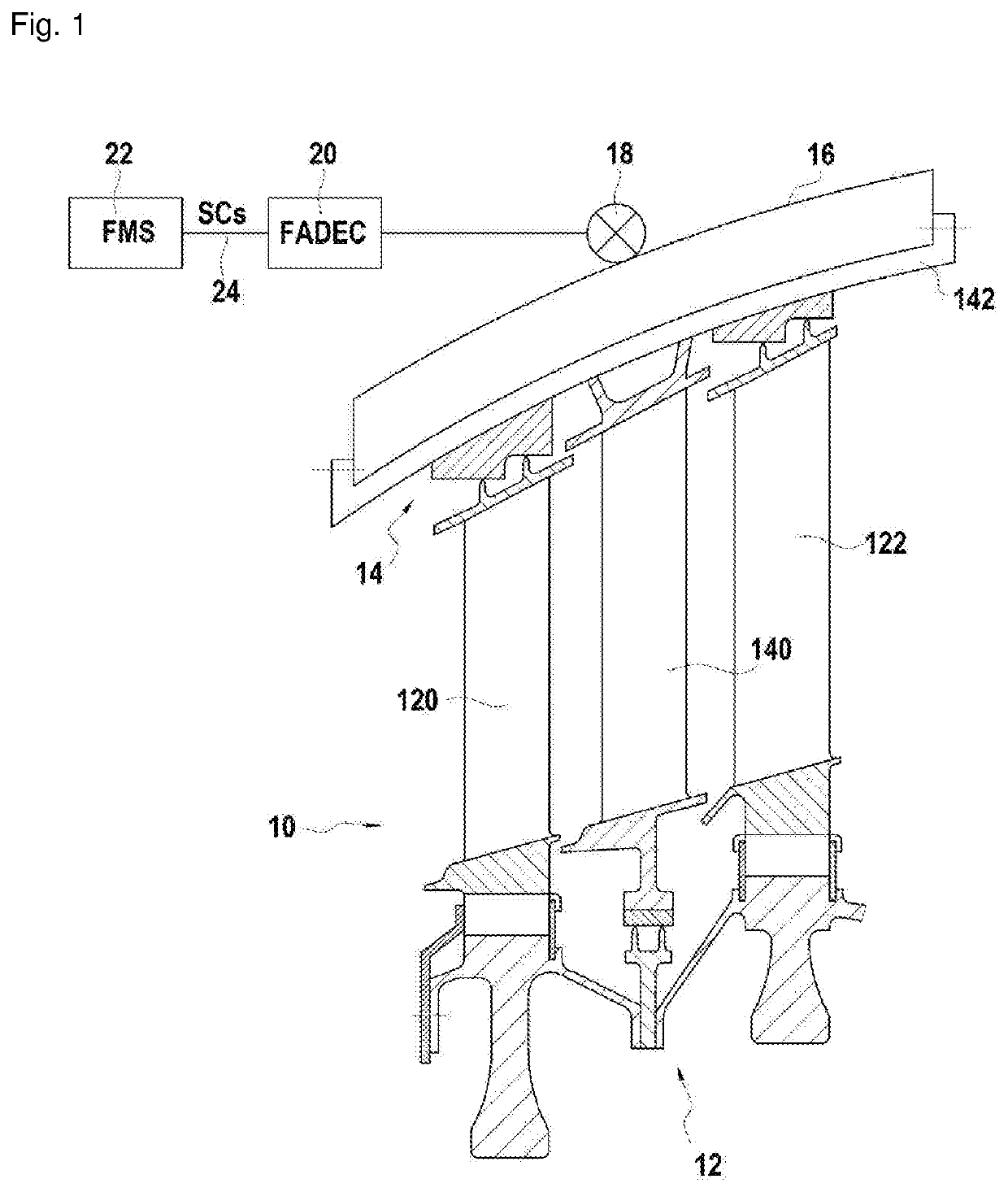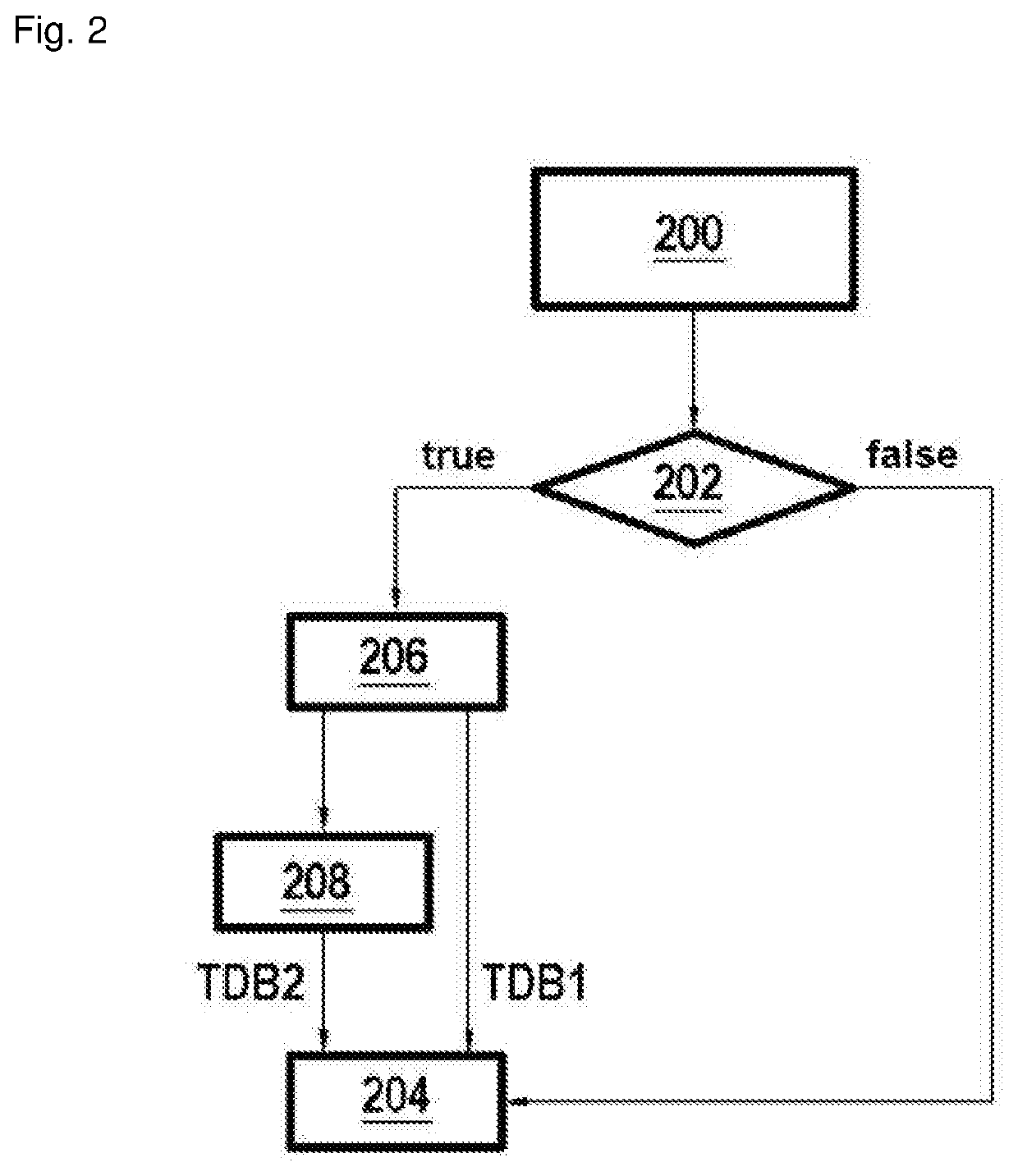Method for controlling a clearance control valve during a step-climb in cruise phase
- Summary
- Abstract
- Description
- Claims
- Application Information
AI Technical Summary
Benefits of technology
Problems solved by technology
Method used
Image
Examples
Embodiment Construction
[0019]FIG. 1 schematically illustrates a partial view of a turbine 10 of an aircraft turbomachine comprising, as illustrated, a rotor 12 provided with rotor blades 120, 122 and a stator 14 comprising a rectifier 140 and a casing 142. Seals are provided between the rotor and the stator whose clearances, as known, are determined by a clearance management system 16 (LPTACC for Low Pressure Turbine Active Clearance Control or HPTACC for High Pressure Turbine Active Clearance Control) positioned around the turbine and comprising a clearance control valve 18 (valve ACC) and which regulates by distribution (or projection) of fresh air the temperature of the turbine casing, thereby affecting the clearances of the seals between rotors and stators of the turbine. It is meant by “fresh air” air taken from a flowpath of the turbomachine, which is at a temperature below the temperature of the casing and which depends on the air bleed location, for example between −60 and +60 degrees for the seco...
PUM
 Login to View More
Login to View More Abstract
Description
Claims
Application Information
 Login to View More
Login to View More - R&D
- Intellectual Property
- Life Sciences
- Materials
- Tech Scout
- Unparalleled Data Quality
- Higher Quality Content
- 60% Fewer Hallucinations
Browse by: Latest US Patents, China's latest patents, Technical Efficacy Thesaurus, Application Domain, Technology Topic, Popular Technical Reports.
© 2025 PatSnap. All rights reserved.Legal|Privacy policy|Modern Slavery Act Transparency Statement|Sitemap|About US| Contact US: help@patsnap.com


